- BETTING TIPS
- BETTING TIPS NAVIGATIONS
 Premier League
Premier League FA Cup
FA Cup League Cup
League Cup La Liga
La Liga Copa del Rey
Copa del Rey Super Cup
Super Cup Champions League
Champions League Europa League
Europa League Europa Conference League
Europa Conference League World Cup
World Cup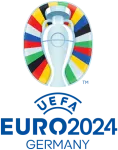 Euro Championship
Euro Championship Nations League
Nations League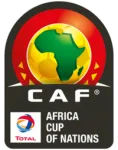 Africa Cup of Nations
Africa Cup of Nations Copa America
Copa America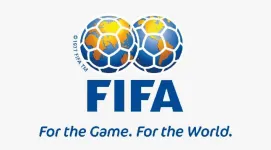 International Friendly
International Friendly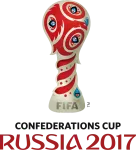 Confederations Cup
Confederations Cup Serie A
Serie A Coppa Italia
Coppa Italia Super Cup
Super Cup Bundesliga
Bundesliga Ligue 1
Ligue 1 DFB Pokal
DFB Pokal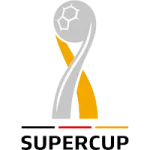 Super Cup
Super Cup Malaysia Super League
Malaysia Super League Coupe de France
Coupe de France Trophée des Champions
Trophée des Champions Pro League
Pro League
- Teams
- TEAMS NAVIGATIONS
 Premier League
Premier League FA Cup
FA Cup League Cup
League Cup La Liga
La Liga Copa del Rey
Copa del Rey Super Cup
Super Cup Champions League
Champions League Europa League
Europa League Europa Conference League
Europa Conference League World Cup
World Cup Euro Championship
Euro Championship Nations League
Nations League Africa Cup of Nations
Africa Cup of Nations Copa America
Copa America International Friendly
International Friendly Confederations Cup
Confederations Cup Serie A
Serie A Coppa Italia
Coppa Italia Super Cup
Super Cup Bundesliga
Bundesliga Ligue 1
Ligue 1 DFB Pokal
DFB Pokal Super Cup
Super Cup Malaysia Super League
Malaysia Super League Coupe de France
Coupe de France Trophée des Champions
Trophée des Champions Pro League
Pro League
- Fixtures & Results
- Fixtures & Results NAVIGATIONS
 Premier League
Premier League FA Cup
FA Cup League Cup
League Cup La Liga
La Liga Copa del Rey
Copa del Rey Super Cup
Super Cup Champions League
Champions League Europa League
Europa League Europa Conference League
Europa Conference League World Cup
World Cup Euro Championship
Euro Championship Nations League
Nations League Africa Cup of Nations
Africa Cup of Nations Copa America
Copa America International Friendly
International Friendly Confederations Cup
Confederations Cup Serie A
Serie A Coppa Italia
Coppa Italia Super Cup
Super Cup Bundesliga
Bundesliga Ligue 1
Ligue 1 DFB Pokal
DFB Pokal Super Cup
Super Cup Malaysia Super League
Malaysia Super League Coupe de France
Coupe de France Trophée des Champions
Trophée des Champions Pro League
Pro League
- Tables
- Tables NAVIGATIONS
 Premier League
Premier League FA Cup
FA Cup League Cup
League Cup La Liga
La Liga Copa del Rey
Copa del Rey Super Cup
Super Cup Champions League
Champions League Europa League
Europa League Europa Conference League
Europa Conference League World Cup
World Cup Euro Championship
Euro Championship Nations League
Nations League Africa Cup of Nations
Africa Cup of Nations Copa America
Copa America International Friendly
International Friendly Confederations Cup
Confederations Cup Serie A
Serie A Coppa Italia
Coppa Italia Super Cup
Super Cup Bundesliga
Bundesliga Ligue 1
Ligue 1 DFB Pokal
DFB Pokal Super Cup
Super Cup Malaysia Super League
Malaysia Super League Coupe de France
Coupe de France Trophée des Champions
Trophée des Champions Pro League
Pro League
- News
- News NAVIGATIONS
 Premier League
Premier League FA Cup
FA Cup League Cup
League Cup La Liga
La Liga Copa del Rey
Copa del Rey Super Cup
Super Cup Champions League
Champions League Europa League
Europa League Europa Conference League
Europa Conference League World Cup
World Cup Euro Championship
Euro Championship Nations League
Nations League Africa Cup of Nations
Africa Cup of Nations Copa America
Copa America International Friendly
International Friendly Confederations Cup
Confederations Cup Serie A
Serie A Coppa Italia
Coppa Italia Super Cup
Super Cup Bundesliga
Bundesliga Ligue 1
Ligue 1 DFB Pokal
DFB Pokal Super Cup
Super Cup Malaysia Super League
Malaysia Super League Coupe de France
Coupe de France Trophée des Champions
Trophée des Champions Pro League
Pro League
- Live ScoresLive
Peru
Peru| Country | : | Peru |
| League | : | |
| Founded | : | 1922 |
| Venue | : | Estadio Monumental |
| Coach | : | Edison Flores (Italy) |
Venue
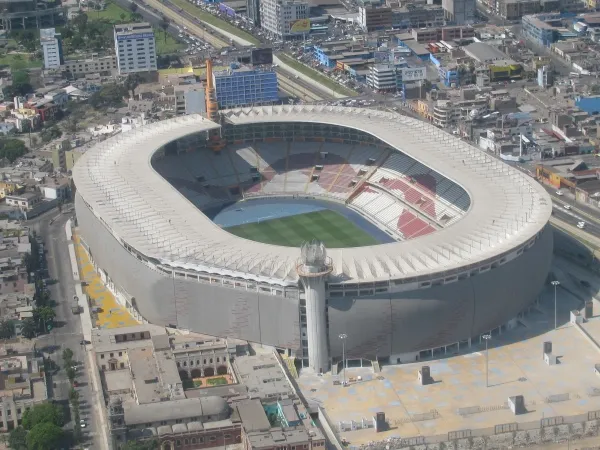
Estadio Monumental
| City | : | Lima |
| Capacity | : | 80,093 |
| Surface | : | Grass |
The Peru national football team, known as La Blanquirroja (The Red and White), is one of the most respected teams in South American football. With a rich history in international football, Peru has been a competitive force in both the Copa América and FIFA World Cup tournaments. Known for their skillful play and passionate fanbase, the team has a reputation for producing some of the best footballers in the region. Peru’s footballing journey has been one of both triumph and struggle, but their achievements on the global stage have made them a team of pride for their nation.
Early History of Peru’s National Football Team
Peru’s football team was officially formed in 1927, and its early history was marked by participation in regional tournaments such as the South American Championship, which is now known as the Copa América. Peru’s initial years on the international scene saw the team gradually build its identity, often competing against the more dominant teams in South America, such as Argentina and Brazil.
In the 1930s, Peru began to establish itself as a competitive team. The team’s early focus was on developing strong attacking play, with skillful players known for their dribbling and creativity. However, it wasn’t until the 1970s that Peru truly emerged as a force in South American football.
Match Predictions
- Tamworth vs. Leyton Orient Predictions & Betting Tips on Nov 04 - 03:30 AM
- Sunderland vs. Everton Predictions & Betting Tips on Nov 04 - 04:00 AM
- Tottenham vs. Manchester United Predictions & Betting Tips on Nov 08 - 20:30 PM
- Everton vs. Fulham Predictions & Betting Tips on Nov 08 - 23:00 PM
- West Ham vs. Burnley Predictions & Betting Tips on Nov 08 - 23:00 PM
Peru’s Major Achievements in International Football
Over the years, Peru has enjoyed significant success on the international football stage, particularly in South America. Some of the team’s major achievements include:
-
Copa América Titles: Peru has won the prestigious Copa América twice, in 1939 and 1975. These victories are considered some of the biggest achievements in the country’s footballing history, with the 1975 win being particularly important as it established Peru as one of the dominant teams in South American football at the time.
-
FIFA World Cup: Peru has qualified for the FIFA World Cup on five occasions, with their best performance coming in 1970 when they reached the quarterfinals. The team also had strong campaigns in 1978 and 1982, although they did not advance past the group stages. Peru’s return to the World Cup in 2018, after a 36-year absence, was a significant moment for the country and its football fans.
-
Copa América Finalists: In recent years, Peru has also made an impact in the Copa América, finishing as runners-up in 2019 after an impressive run in the tournament. This marked the team’s first appearance in a Copa América final since 1975, and it signaled the resurgence of the team in international football.
Peru’s FIFA World Cup Journey
The Peru national football team has participated in five FIFA World Cups, with their best performance coming in 1970 when they reached the quarterfinals. This World Cup marked Peru’s rise as a footballing powerhouse, and the team’s entertaining style of play earned them international recognition. Peru’s squad featured standout players like Teófilo Cubillas, who is regarded as one of the best Peruvian footballers of all time.
After a long absence from the tournament, Peru returned to the 2018 FIFA World Cup in Russia, marking the nation’s first World Cup appearance since 1982. The team’s return to the global stage was a proud moment for Peruvians, although they were eliminated in the group stage.
Despite their limited World Cup success, Peru remains an important fixture in the tournament’s history, and the team continues to strive for future qualification in upcoming World Cups.
Peru’s Rivals in South America
Peru shares intense football rivalries with several teams in South America. One of the most famous rivalries is with Chile, with whom they have had many dramatic encounters in both World Cup qualifiers and Copa América tournaments. Matches between these two teams are often heated and fiercely contested, with both nations battling for supremacy in the region.
Another significant rivalry is with Argentina, with whom Peru has had many notable encounters. The games between these two teams are always competitive and attract considerable attention from fans across the continent. Brazil also remains a regional rival, as the two countries frequently meet in World Cup qualifiers and Copa América finals, adding to the rich footballing history of South American football.
Key Players in Peru’s Football History
Throughout its history, Peru has produced a wealth of talented footballers who have made significant contributions to the national team’s success. Some of the key players in Peru’s football history include:
-
Teófilo Cubillas: Often regarded as one of the greatest South American footballers, Cubillas was the star of the 1970 World Cup team and is considered Peru’s greatest ever player. He was known for his vision, creativity, and flair on the ball, and his contributions to Peru’s footballing success in the 1970s are still remembered fondly today.
-
Paolo Guerrero: One of the most important figures in Peru’s recent football history, Paolo Guerrero is the team’s all-time top scorer. Known for his leadership and goal-scoring ability, Guerrero has been a key player for Peru in their World Cup qualification campaigns and their Copa América successes.
-
Héctor Chumpitaz: A legendary defender, Chumpitaz played a crucial role in Peru’s 1975 Copa América victory and was known for his leadership and resilience. He is considered one of the best defenders in South American football history.
-
Juan Reynoso: A stalwart of the Peru national team in the 1990s, Reynoso was known for his solid defending and leadership. He was part of the Peru squad that reached the 1995 Copa América semifinals and played a crucial role in the team’s defense.
Peru’s Playing Style and Tactics
Peru’s footballing style is characterized by skillful play, fluid passing, and creative attacking. Historically, Peru has been known for producing technically gifted players who are adept at dribbling and creating chances through intricate play. The team has often favored a quick, attacking style, relying on the skill and vision of their midfielders to unlock opposition defenses.
In recent years, under manager Ricardo Gareca, Peru has adopted a more balanced and disciplined approach to their play, focusing on organization and defensive solidity while still maintaining their attacking instincts. Peru’s style continues to evolve as the team aims to compete with the elite teams in South America.
Peru’s Football Development System
Peru has made significant strides in improving its football development system in recent years. The Peruvian Football Federation (FPF) has invested in youth academies and infrastructure, providing more opportunities for young players to develop their skills and progress through the ranks. As a result, more Peruvian players are now emerging in top European leagues, further raising the profile of Peruvian football globally.
Despite the challenges, the Peruvian football system continues to improve, and the country’s strong footballing culture ensures that future generations of players will have a solid foundation on which to build their careers.
Peru’s Football Culture and Fanbase
Football is the most popular sport in Peru, and the national team enjoys immense support from fans across the country. The team’s matches are a major event, and Peruvians fill stadiums and gather to cheer for their team with great passion. Peru’s football culture is rooted in a sense of pride, with the national team serving as a source of identity and unity for the country.
Peru’s passionate fanbase is known for creating a vibrant atmosphere during games, and their support has been an important part of the team’s success on the international stage.
Peru’s Women’s National Football Team
The women’s national football team of Peru is also making strides in international football. While the team has not yet achieved the same level of success as their male counterparts, the women’s team has seen improvements in recent years. Peru has qualified for the Copa América Femenina and is continuing to develop its talent pipeline in women’s football. As the sport continues to grow, the women’s team is poised to make further advancements on the continental and global stage.
Peru’s Football Future
The future of Peru’s football team looks bright, with emerging talents such as André Carrillo and Yoshimar Yotún representing the new generation of Peruvian footballers. With continued investment in youth development and football infrastructure, Peru is well-positioned to continue competing at a high level in South American football and in global tournaments. The team’s qualification for the 2018 FIFA World Cup was just the beginning, and Peru is hungry for more success on the world stage.
Conclusion
The Peru national football team has a proud and rich history, with several notable achievements in both the Copa América and FIFA World Cup. With a passionate fanbase, a strong footballing culture, and a history of producing talented players, Peru continues to be a major force in South American football. As the team looks to the future, their combination of experience and youth gives them the potential to achieve even greater success in upcoming international tournaments.
News & Updates


